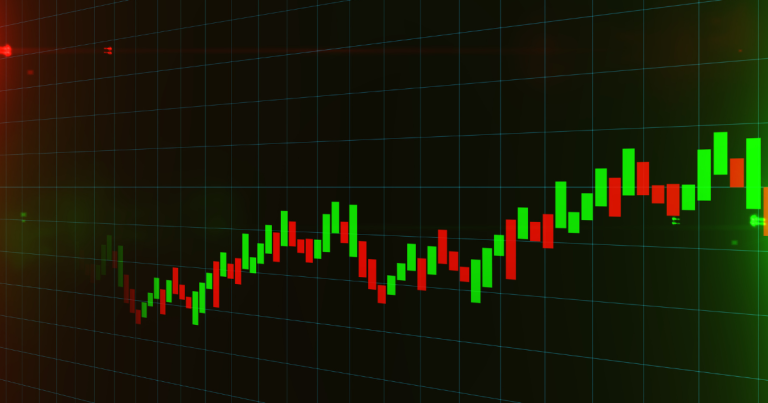
Understanding Weighted Moving Averages
Introduction to WMAs
Weighted Moving Averages (WMAs) are like the cool kids of the moving average world. They give more love to recent data points, making them super relevant for traders and stock analysts. This method helps folks spot trends and market shifts faster by focusing on the latest info. Unlike simple moving averages (SMAs) that treat all data points the same, WMAs prioritize recent prices, offering a sharper view of price movements.
To calculate WMAs, you multiply each data point by a specific weighting factor, ensuring the total weight equals one (or 100%). This technique smooths out price data, giving a clearer picture of market trends. If you want a step-by-step guide on calculating WMAs, check out our article on weighted average calculation.
Why WMAs Matter
WMAs are a trader’s best friend for several reasons:
Quick to React: By giving more weight to recent data, WMAs react faster to new information. This quick response helps traders spot and act on market trends and changes in no time.
Smooth Operator: WMAs smooth out price data, cutting through the noise of short-term fluctuations. This makes it easier to see the big picture and make informed trading decisions.
Trend Spotter: WMAs are great at identifying trends. Traders use them to generate trade signals; when prices move towards or above the WMA, it’s a signal to exit, and when they dip near or below the WMA, it’s a good time to enter a trade (Corporate Finance Institute).
Better Than the Rest: WMAs have an edge over other moving averages like SMAs and EMAs. Comparing WMAs with these averages helps traders pick the best method for their strategy. For more details, check out our article on moving average types.
| Moving Average Type | Weighting Method | Responsiveness to Recent Data |
|---|---|---|
| Simple Moving Average (SMA) | Equal Weighting | Low |
| Exponential Moving Average (EMA) | Exponential Weighting | Medium |
| Weighted Moving Average (WMA) | Linear Weighting | High |
Grasping the importance of WMAs can seriously boost your trading game. For more on how to use WMAs in your trading strategies, visit our sections on trading strategies with WMAs and real-time market analysis.
Calculating Weighted Moving Averages
Weighted Moving Averages (WMAs) are a favorite among traders because they highlight recent data points. Let’s break down how to calculate WMAs and how they can be used in trading.
Formula for WMAs
To calculate a Weighted Moving Average, you assign weights to each data point, giving more importance to recent ones. Here’s the formula:
WMA = ∑ i 1 ^ n ( ( P i × W i ) ∑ i 1 ^ n ( W iWhere:
- ( P_i ) = Price at the ith position
- ( W_i ) = Weight assigned to the price at the ith position
- ( n ) = Number of periods
For example, in a 5-day WMA, you might assign weights like this: 5 for the most recent day, 4 for the day before, and so on down to 1 for the oldest day. Then, you sum the weighted prices and divide by the sum of the weights. You can also use our handy stock average calculator.
| Day | Price (P) | Weight (W) | P x W |
|---|---|---|---|
| 1 | $100 | 1 | $100 |
| 2 | $102 | 2 | $204 |
| 3 | $104 | 3 | $312 |
| 4 | $103 | 4 | $412 |
| 5 | $105 | 5 | $525 |
| Total | 15 | $1553 |
So, the WMA for this 5-day period is:
WMA = 1553 15 = 103.53This method ensures that recent prices have a bigger impact, making the WMA more responsive to market changes (Investopedia).
Interpretation of WMAs
Understanding WMAs is all about recognizing their ability to smooth out price data while emphasizing recent information. This makes them super handy for traders who want to spot trends and make decisions based on the latest market conditions.
Key Points for Interpretation:
- Trend Spotting: If the WMA is rising, it suggests an upward trend. If it’s falling, it indicates a downward trend. Traders use this to decide when to enter or exit trades.
- Focus on Recent Data: Because WMAs give more weight to recent prices, they’re more sensitive to current movements, offering timely signals for short-term trading.
- Smoothing Out Noise: WMAs help smooth out daily price fluctuations, making it easier to see the bigger picture without getting distracted by minor ups and downs.
For a deeper dive into how WMAs stack up against other moving averages like Simple Moving Averages (SMAs) and Exponential Moving Averages (EMAs), check out our article on moving average types. Plus, you can boost your trading strategies by combining WMAs with other indicators, as we discuss in our piece on moving average trading strategies.
By getting a handle on the formula and interpretation of Weighted Moving Averages, traders can better analyze market trends and make smarter trading decisions. For more on different moving averages and how to use them, visit our section on simple moving average vs exponential moving average.
How Weighted Moving Averages Can Boost Your Trading Game
Weighted moving averages (WMAs) are a must-have for traders who need to stay on top of market changes. By giving more importance to recent prices, WMAs help you catch the latest trends and make smarter moves.
Using WMAs in Trading
WMAs are popular among traders because they react quickly to price changes. This quick response is a lifesaver for anyone needing to make fast decisions based on the latest market data. Traders use WMAs to spot trends, predict reversals, and make better trading choices (Investopedia).
Example: Calculating a 5-Day WMA
Let’s break it down with an example. Imagine a stock with these closing prices over five days: $20, $22, $24, $26, $28. The weights are 1, 2, 3, 4, and 5.
| Day | Closing Price ($) | Weight |
|---|---|---|
| 1 | 20 | 1 |
| 2 | 22 | 2 |
| 3 | 24 | 3 |
| 4 | 26 | 4 |
| 5 | 28 | 5 |
Here’s how you calculate the WMA:
WMA = ( 20 × 1 ) + ( 22 × 2 ) + ( 24 × 3 ) + ( 26 × 4 ) + ( 28 × 5 ) 1 + 2 + 3 + 4 + 5WMA = 20 + 44 + 72 + 104 + 140 15
WMA = 380 15 = 25.33
This shows how recent prices have a bigger impact on the WMA, making it more sensitive to changes.
Why WMAs Rock
WMAs have several perks that make them a go-to tool for traders:
- Quick Response: WMAs react faster to new info by giving more weight to recent prices. This helps traders spot trends and reversals quickly (Investopedia).
- Better Accuracy: By focusing on recent data, WMAs give a clearer picture of current market conditions compared to simple moving averages (SMAs). This accuracy helps traders make smarter decisions (FasterCapital).
- Trend Spotting: WMAs are more sensitive to price changes, making it easier to spot new trends. This is key for traders looking to profit from short-term price moves (FXOpen).
- Less Lag: The latest data has a bigger impact on the WMA line, reducing the delay compared to SMAs. This makes WMAs great for real-time market analysis (FasterCapital).
For more info on how WMAs stack up against other moving averages, check out our article on moving average types. Also, explore different moving average trading strategies to up your trading game with WMAs.
By getting the hang of WMAs, traders can gain an edge in the market, making more strategic and timely trading decisions.
Comparing WMAs with Other Averages
When you’re diving into stock trends, moving averages are your go-to tools for smoothing out price data and spotting trends. Among these, Weighted Moving Averages (WMAs) stand out because they focus more on recent data. Let’s see how WMAs stack up against Simple Moving Averages (SMAs) and Exponential Moving Averages (EMAs).
WMAs vs Simple Moving Averages
Weighted Moving Averages (WMAs) give more weight to recent data points, making them a better mirror of current market vibes. This helps traders catch trends and make smarter moves (FasterCapital). On the flip side, Simple Moving Averages (SMAs) treat all data points equally, making them slower to react to recent price swings.
| Aspect | WMA | SMA |
|---|---|---|
| Weight Assignment | More recent data gets more weight | All data points are treated equally |
| Sensitivity to Price Changes | Higher | Lower |
| Responsiveness to Market Trends | More responsive | Less responsive |
| Use Case | Short-term trading, spotting quick trend changes | Long-term trend analysis |
Because WMAs react faster to price changes, they’re great for short-term traders. SMAs, being smoother, are better for long-term trend analysis.
Want to dig deeper into moving averages? Check out our article on moving average types.
WMAs vs Exponential Moving Averages
Both Exponential Moving Averages (EMAs) and WMAs focus on recent data, but they do it differently. EMAs use an exponential weighting system, giving the most recent data the most weight, but older data still matters. This makes EMAs more sensitive than SMAs but less so than WMAs (FXOpen).
| Aspect | WMA | EMA |
|---|---|---|
| Weight Assignment | More recent data gets more weight | Exponentially decreases weight for older data |
| Sensitivity to Price Changes | Higher | Moderate |
| Responsiveness to Market Trends | More responsive | Moderately responsive |
| Use Case | Spotting quick trend changes, short-term trading | Medium to long-term trading, smoothing price data |
Both WMAs and EMAs give a timely snapshot of market conditions compared to SMAs. WMAs are super for short-term trading because of their high sensitivity. EMAs strike a balance between being responsive and smooth, making them good for medium to long-term trading.
For more on the differences between these averages, check out our article on simple moving average vs exponential moving average.
Knowing the ins and outs of WMAs, SMAs, and EMAs helps traders pick the right tool for their strategy and time frame. This boosts their ability to make smart decisions and up their trading game. For more on using these averages in trading strategies, explore our article on moving average trading strategies.
Strategies with Weighted Moving Averages
Weighted Moving Averages (WMAs) are like the secret sauce for traders, helping to smooth out price data while giving more weight to recent numbers. Let’s break down some killer trading strategies using WMAs and how to pair them with other indicators for smarter trades.
Trading Strategies with WMAs
WMAs help traders spot trade signals by looking at how prices move around the WMA line.
Trend Following Strategy: This one’s all about spotting the market’s direction. If the price stays above the WMA, it’s a sign of an uptrend and a good time to buy. If the price is below the WMA, it’s a downtrend, so think about selling.
Crossover Strategy: Here, you use two WMAs with different time frames. A buy signal pops up when a shorter-period WMA crosses above a longer-period WMA, showing upward momentum. A sell signal appears when the shorter-period WMA dips below the longer-period WMA, indicating downward momentum. For more details, check out our section on moving average trading strategies.
Support and Resistance: WMAs can act like invisible walls of support and resistance. Look for buy signals when the price gets close to the WMA from above, treating it as support. Sell signals show up when the price nears the WMA from below, acting as resistance.
| Strategy Type | Description |
|---|---|
| Trend Following | Buy when price is above WMA; Sell when price is below WMA |
| Crossover | Buy when short-period WMA crosses above long-period WMA; Sell when short-period WMA crosses below long-period WMA |
| Support and Resistance | Buy near WMA acting as support; Sell near WMA acting as resistance |
Mixing WMAs with Other Indicators
Pairing WMAs with other indicators can make your trade signals more accurate and your decisions sharper.
Moving Average Convergence Divergence (MACD): Using WMAs with MACD helps spot changes in momentum. When the MACD line crosses the signal line, it can confirm the trend direction shown by the WMA.
Relative Strength Index (RSI): The RSI can work with WMAs to find overbought or oversold conditions. For example, if the RSI shows an overbought condition while the price is above the WMA, it might signal a reversal.
Volume-Weighted Average Price (VWAP): Combining WMAs with VWAP helps gauge the overall market trend. VWAP gives a price benchmark for the trading day, and WMAs can show deviations from this benchmark.
| Indicator | Use Case |
|---|---|
| MACD | Confirms trend direction indicated by WMA |
| RSI | Identifies overbought/oversold conditions with WMA |
| VWAP | Assesses overall market trend with WMA deviations |
Using these strategies and mixing WMAs with other indicators can seriously boost your trading game. For more tips on using WMAs effectively, visit our section on implementing WMAs effectively.
Boost Your Trading Game with WMAs
Weighted Moving Averages (WMAs) are like the secret sauce for traders, giving a sharper and more accurate picture of market trends. Let’s dive into how you can use WMAs for real-time market analysis and how to get the most out of them.
Real-Time Market Analysis
WMAs are quicker on the draw compared to simple moving averages (SMAs). They react faster to price changes, helping traders spot trends sooner and make smarter moves. According to FXOpen, WMAs give more weight to recent data, cutting down the lag you get with SMAs.
| Moving Average Type | Sensitivity to Price Changes | Delay |
|---|---|---|
| Simple Moving Average (SMA) | Low | High |
| Weighted Moving Average (WMA) | High | Low |
Traders love WMAs because they focus more on recent prices, making them better at catching market shifts. For example, a WMA can tip you off to a price reversal or continuation before an SMA would, giving you a leg up.
Pair WMAs with other indicators for even better results. Try combining WMAs with moving average convergence divergence (MACD) to sharpen your trend-spotting skills and signal accuracy.
Making WMAs Work for You
To get the most out of WMAs, keep these tips in mind:
Pick the Right Time Frame: The time frame you choose can make or break your WMA’s effectiveness. Shorter time frames make WMAs more sensitive to recent price changes, while longer ones give you a bigger picture. Need help choosing? Check out our guide on time frame selection.
Choose Your Weighting Scheme: The weighting scheme decides how much recent data matters. A common method is linear weighting, where the latest data point gets the most weight, and it decreases for older points.
Mix with Other Indicators: WMAs work great with other technical indicators. For instance, combining WMAs with volume weighted average price (VWAP) can show you the average price of a security, adjusted for volume. This can help you find the best entry and exit points.
Keep It Updated: Regularly update your WMA with new data to keep it accurate. This ensures your WMA reflects the latest market conditions.
By following these tips, you’ll be able to use WMAs to make smarter, faster trading decisions. For more strategies and tips on using moving averages, check out our article on moving average trading strategies.








Good stuff, but I’m still kinda confused about how the weights actually work. Maybe a more visual example would help?
okay, so i get how to calculate wmas now, but i still don’t see how they’re different from regular moving averages. maybe i missed something?
this is a pretty thorough intro to wmas. i’m just starting out with technical analysis, so this is a good starting point for me.
Super helpful Now I understand why WMAs are so useful for trading Definitely gonna try this out on my next investment
This is a great explanation of WMAs! I’ve been trying to wrap my head around them for ages, and this finally made sense. Thanks for the clear breakdown.